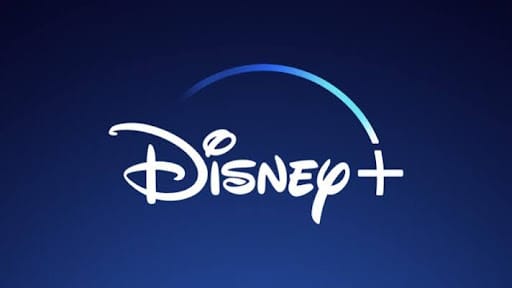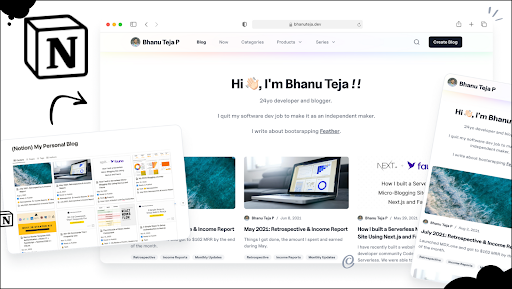How Disney+ Conquered Global Streaming: A Regional Strategy Breakdown

When Disney+ entered the streaming wars in November 2019, it faced an uphill battle. Netflix had a decade-long head start, Prime Video was embedded in Amazon’s ecosystem, and local platforms dominated many regional markets. But just five years later, Disney+ stands as the second-largest streaming service in the world, with nearly 150 million global subscribers.
The key to Disney+’s success wasn’t just its content and hyper-localized execution. Instead of relying on a single global strategy, Disney+ deployed custom playbooks per region, shaped by user behaviour, infrastructure, regulation, and economics.
Here is how localization tools like SurgeGrowth can support the same global scale.
Disney+ at a Glance
- Launch Date: November 12, 2019 (U.S., Canada, Netherlands)
- Global Reach: 100+ countries across North America, Europe, Asia-Pacific, and Latin America
- Subscribers: ~150M across Disney+, Disney+ Hotstar, Hulu (Q1 2025)
- Content Spend: Reduced from $33B (2023) to a projected $25B (2024) as Disney shifts from growth to profitability
- Rank: Second only to Netflix in global streaming market share
The Global Playbook: Disney+’s 4-Pillar Expansion Strategy
1. Content Availability and Licensing
Disney launched first in markets where it owned or reclaimed content rights. This allowed for a seamless rollout without third-party licensing entanglements. Over time, its content strategy evolved from broad spending to targeted investment—especially in high-performing franchises and regional hits.
🎯 Netflix continues to dominate original production volume, but Disney+ leverages decades of existing IP to reduce risk and drive loyalty.
2. Consumer-Driven Market Entry
Data guided every decision. Premieres like The Mandalorian generated 2M+ subscriptions in a single weekend, and Marvel launches have consistently boosted sign-ups by 30–40%. These patterns shaped launch timing, marketing, and localization choices.
3. Technology Localization
Disney adapted platform features to regional user habits. In Asia-Pacific, where 70%+ of users stream via mobile, the platform prioritized:
- Bandwidth-saving modes (up to 60% reduction)
- Longer download windows
- Flexible offline viewing
In contrast, Western markets emphasized integration with connected TVs, family profiles, and cross-platform continuity.
4. Telecom and Distribution Partnerships
Strategic deals with telecoms like Sky (UK), Canal+ (France), and Deutsche Telekom (Germany) offered bundled access to millions of subscribers. These bundles outperformed direct-to-consumer models by delivering 35% better retention and lower acquisition costs.
📊 Compared to Netflix and Prime Video, which rely on standalone subscriptions, Disney+’s bundling strategy improved lifetime value through shared billing and frictionless onboarding.
Region by Region: How Disney+ Adapted to Win
🇺🇸 North America: Bundling and Brand Synergy
In the U.S. and Canada, Disney+ leaned heavily into its bundle strategy, offering:
- Disney+ (family & franchise content)
- Hulu (adult dramas & originals)
- ESPN+ (live sports)
For $13–$15/month, the bundle provided more breadth than Netflix or Prime at a lower price point.
Results:
- Bundle subscribers are 40% less likely to cancel
- Hulu’s integration into Disney+ boosted engagement by 23%
- Tentpole releases like WandaVision and Loki consistently spiked subscription growth by 35–60%
🧠 Disney capitalized on FOMO-driven releases while using Hulu’s content depth to drive retention—a tactic Netflix is only beginning to replicate via games and live sports.
🇪🇺 Europe: Regulation, Localization, and Cultural Fit
Key Challenges:
- EU mandates 30% local content quotas
- Highly fragmented audiences across languages and cultures
Disney’s Solution:
- Introduced Star, a hub for adult content, instead of launching Hulu
- Opened production hubs in Spain, France, Italy, and Germany, producing over 50 local originals annually
- Formed several major telecom bundles to integrate with existing TV ecosystems
Impact:
- Star integration boosted daily viewing time by 36%
- Shows like Parallels (France) and Sam – A Saxon (Germany) matched franchise-level viewership during release weeks
📉 By contrast, Amazon and Netflix had to retrofit their platforms to comply with EU rules, while Disney built localization into its core rollout.
🌏 Asia-Pacific: Mobile-First Execution at Scale
India: The Hotstar Advantage
Disney’s acquisition of Hotstar paid off massively:
- Cricket rights (IPL) brought in 25M+ concurrent viewers
- Disney+ Hotstar became the largest single-market arm of Disney’s streaming empire
However, Disney lost IPL rights in 2023, creating a retention challenge. To counter this, Disney focused on:
- Local content expansion
- Hyper-mobile experiences
- Regional pricing
SurgeGrowth’s Role in Pricing Optimization
To serve vastly different economies—from $12/month in Australia to $1.80/month in India—Disney+ used price localization tools like SurgeGrowth, which:
- Adjust prices using PPP-based indexes
- A/B test user segments for retention impact
- Monitor regional currency volatility
🧩 Without price localization, Netflix struggled in India, while Disney+ gained 50M+ users before saturation.
🌎 Latin America: Breaking the Payment Barrier
Core Problem:
Low credit card penetration + economic volatility
Disney’s Response:
- Enabled cash-based payments (Boleto in Brazil, OXXO in Mexico)
- Integrated digital wallets like Mercado Pago
- Allowed bank transfers in countries like Colombia and Chile
Results:
- Over 60% of LATAM subscribers pay through non-credit methods
- Reduced churn by adapting to real-world consumer behavior
🔍 Where Netflix and Prime Video insisted on cards, Disney met users where they were.
Universal Strategies That Worked Across Markets
🧱 The Content Pyramid
- Global Tentpoles – Franchise releases like Marvel, Pixar, and Star Wars
- Regional Crossover Hits – European or Asian shows that travel well
- Local Originals – Culturally specific content that builds daily engagement
This structure lets Disney balance subscriber acquisition (top) with retention (middle & base)—something Netflix is now mimicking via regional investments in Africa and Korea.
🧠 AI-Powered Personalization
In 2025, Disney+ began deploying advanced personalization engines. Early testing showed:
- 28% more engagement when suggestions matched viewing patterns
- Reduced churn through behavioral segmentation
Tools like SurgeGrowth support this with:
- Demand forecasting
- Regional cohort modeling
- Personalized pricing recommendations
🔭 What’s Next for Disney+
With core markets near saturation, Disney+ is focused on:
- Emerging Markets: Gradual rollout in Africa and deeper Southeast Asia expansion
- Profitability Over Pure Growth: Leaner productions, smarter bundling, and advertising models
- AI-Driven Experience: Dynamic pricing, real-time recommendations, and personalized UX
📈 As competitors scramble to balance global ambitions with local constraints, Disney+ remains a masterclass in adaptive scale.
💡 Key Takeaways
- Localization Wins: Disney succeeded by customizing products, pricing, and partnerships for each region
- Tech Is a Growth Multiplier: Tools like SurgeGrowth enable smarter pricing, content targeting, and churn reduction
- Retention > Growth: With subscriber growth slowing, bundling, personalization, and payments are the new battlegrounds
Sources and References
[1] https://www.advanced-television.com/2019/04/12/disney-launching-nov-12-at-6-99/
[3]https://press.disneyplus.com/news/disney-plus-continues-international-expansion
[4] Variety, "Disney to Cut $2 Billion in Content Spending as Bob Iger Charts New Course," October 2023 [5]https://www.streamtvinsider.com/video/disney-hulu-max-bundle-proves-sticky-80-3-month-retention
[6]https://www.parrotanalytics.com/reports/
[7] https://thewaltdisneycompany.com/investor-relations/
[8] https://www.google.com/search?q=https://www.coe.int/en/web/european-audiovisual-observatory
[10] Hotstar Technical Report, "Scaling for Peak Viewership," 2023
[11] https://media-partners-asia.com/AP2024/Media_Release.pdf
[12] https://www.grandviewresearch.com/horizon/outlook/video-streaming-market/latin-america
[13] Disney LatAm Annual Report, "Latin America Streaming Market Review," 2023




